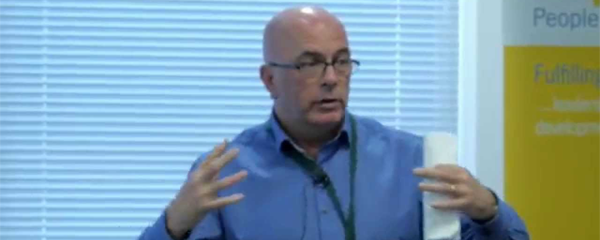‘Top performers have a superpower: Happiness.’
That is the title of an article in the MITSloan Management Review, by Paul Lester, Ed Diener and Martin Seligman.
In this research, the largest long-term wellbeing study ever done, they followed almost 1 million US army soldiers over five years. Looking at the 12% of soldiers that achieved any sort of award over that period, they found that the initially happiest quartile of soldiers won four times as many awards when compared to the least happy quartile.
This backs up previous work from Diener and Tov that found that happier employees are more likely to become leaders, get higher scores on performance evaluations and tend to be better teammates.
Additional research by Tenney, Poole and Denier found that happier employees are “healthier, have lower rates of absenteeism, are highly motivated to succeed, are more creative, have better relationships with peers and are less likely to leave the company.”
Their conclusions were:
- That you should hire for happiness (or at least use it as a tiebreaker after taking account of knowledge and skills).
- You should develop happiness in your workforce.
- You should retain employees who are happy.
The latter is especially the case because happiness is contagious. The Farmingham Heart Study, through examining 20 years of data, found that the effect of happiness extended not just to people’s friends but to their friends’ friends.
The authors outline three ways in which you can develop happiness in your workforce.
The first is a ‘Gratitude Visit,’ presenting a 300-word testimony to someone who changed your life for the better.
The second is ‘Three Good Things’, writing a gratitude journal of three good things each day. In this way you can document what has gone well and what has caused it to go well.
The third is ‘Using Signature Strengths in a New Way’. The basic idea is to complete an online strengths survey (such as the CliftonStrengths assessment) to identify your strengths and then trying to use one of those strengths each day for at least a week.
Research by Diener, Heintzelman and Kushlev found that the latter two significantly increased happiness and decreased depression over the course of six months. Gratitude Visits were able to achieve such positive results in over just one month.
A key principle here at Happy is that “people work best when they feel good about themselves.”
Here at Happy, we focus more on the culture of the organisation. We agree on the need for people to play to their strengths but look to creating cultures of trust and freedom where, if there is a manager, they coach rather than telling people what to do.
So it makes absolute sense that when people are happy they are also more productive and produce better outcomes. For us the key focus of the leadership of an organisation should be to create a framework where that is possible.
I often ask audiences to put their hand in the air if that is the key focus of leadership in their organisation. The responses vary, but it is normally about one in 20 that raise their hand.
However some years ago I was on a panel with the Chair of one of Britain’s biggest retail companies with over 85,000 staff, who immediately raised his hand stating that was they key focus in his organisation. He explained how at the last Board meeting, they spent 20 minutes discussing the numbers and three hours debating how to motivate people.
Does your organisation’s Board or Senior Leadership team spend five times as much time on people as on the numbers?
That company was John Lewis, which has often been rated the UK’s most admired company. It was set up back in the 1920s by John Speden Lewis as a workers mutual. As Sarah Gillard said at our 2018 Happy Workplaces Conference, “Speden was very clear: “Happy partners = happy customers = more profit.”
All this research makes very clear that focusing on your employee’s wellbeing is crucial not just to making your people happier (and why wouldn’t you want that?), but also to making your organisation more productive.
Does your workplace focus on making your people happy?
Related blogs:
- Make Your People Happy, Like John Lewis Does — Find out more about how John Lewis keeps its 85,000 staff happy in this blog.
- Revealed: The Most Important Management Behaviour — Google’s Project Oxygen analysed thousands of managers to find out what made their best managers so effective. Here’s the results.
- The Happy Challenge: Make no Decisions for Three Months — Managers, could you coach your staff rather than making decisions for three months?























